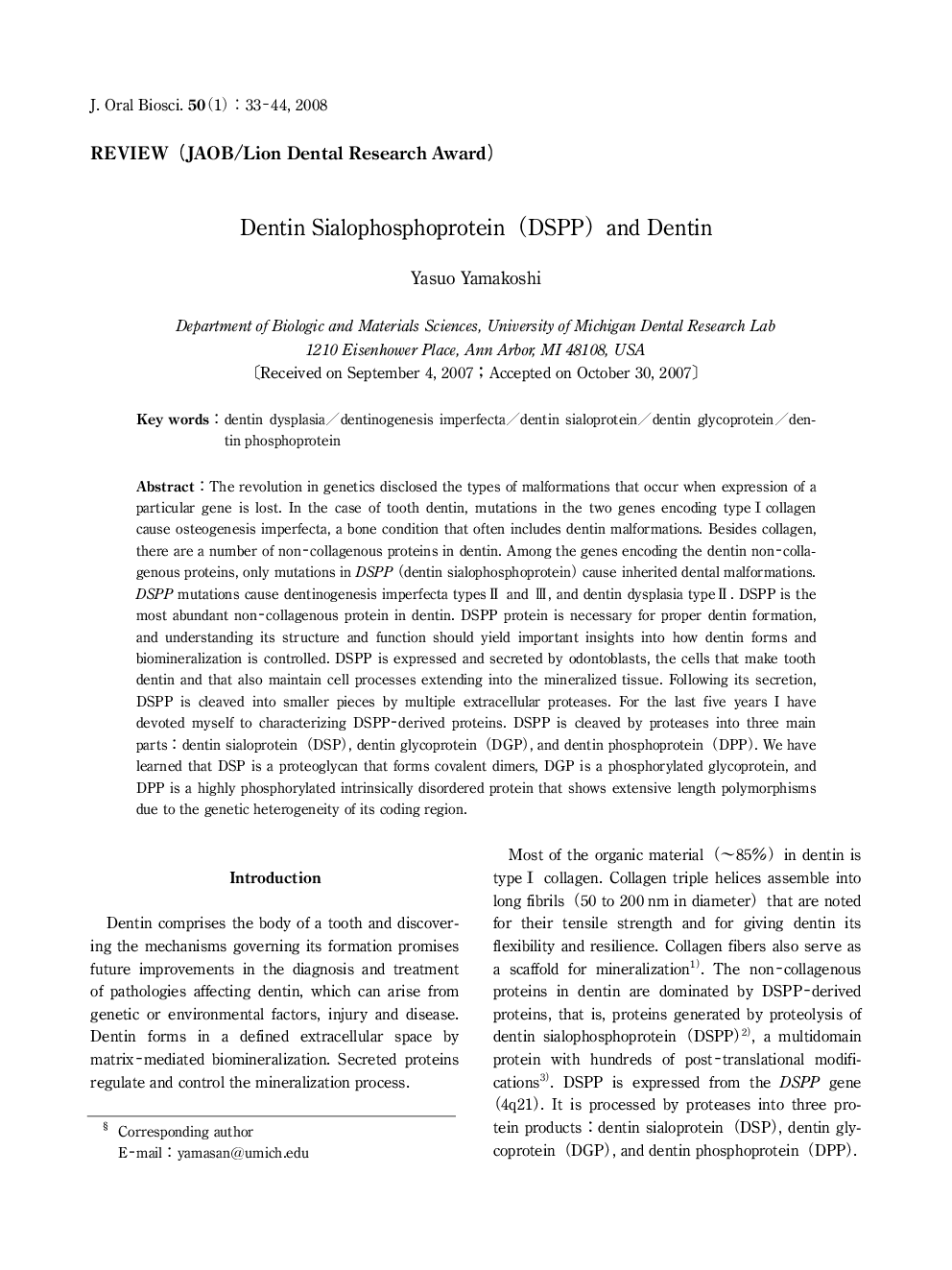| کد مقاله | کد نشریه | سال انتشار | مقاله انگلیسی | نسخه تمام متن |
|---|---|---|---|---|
| 2777067 | 1152666 | 2008 | 12 صفحه PDF | دانلود رایگان |

The revolution in genetics disclosed the types of malformations that occur when expression of a particular gene is lost. In the case of tooth dentin, mutations in the two genes encoding typeIcollagen cause osteogenesis imperfecta, a bone condition that often includes dentin malformations. Besides collagen, there are a number of non-collagenous proteins in dentin. Among the genes encoding the dentin non-collagenous proteins, only mutations in DSPP (dentin sialophosphoprotein) cause inherited dental malformations. DSPP mutations cause dentinogenesis imperfecta typesII and III, and dentin dysplasia typeII. DSPP is the most abundant non-collagenous protein in dentin. DSPP protein is necessary for proper dentin formation, and understanding its structure and function should yield important insights into how dentin forms and biomineralization is controlled. DSPP is expressed and secreted by odontoblasts, the cells that make tooth dentin and that also maintain cell processes extending into the mineralized tissue. Following its secretion, DSPP is cleaved into smaller pieces by multiple extracellular proteases. For the last five years I have devoted myself to characterizing DSPP-derived proteins. DSPP is cleaved by proteases into three main parts: dentin sialoprotein (DSP), dentin glycoprotein (DGP), and dentin phosphoprotein (DPP). We have learned that DSP is a proteoglycan that forms covalent dimers, DGP is a phosphorylated glycoprotein, and DPP is a highly phosphorylated intrinsically disordered protein that shows extensive length polymorphisms due to the genetic heterogeneity of its coding region.
Journal: Journal of Oral Biosciences - Volume 50, Issue 1, 2008, Pages 33-44